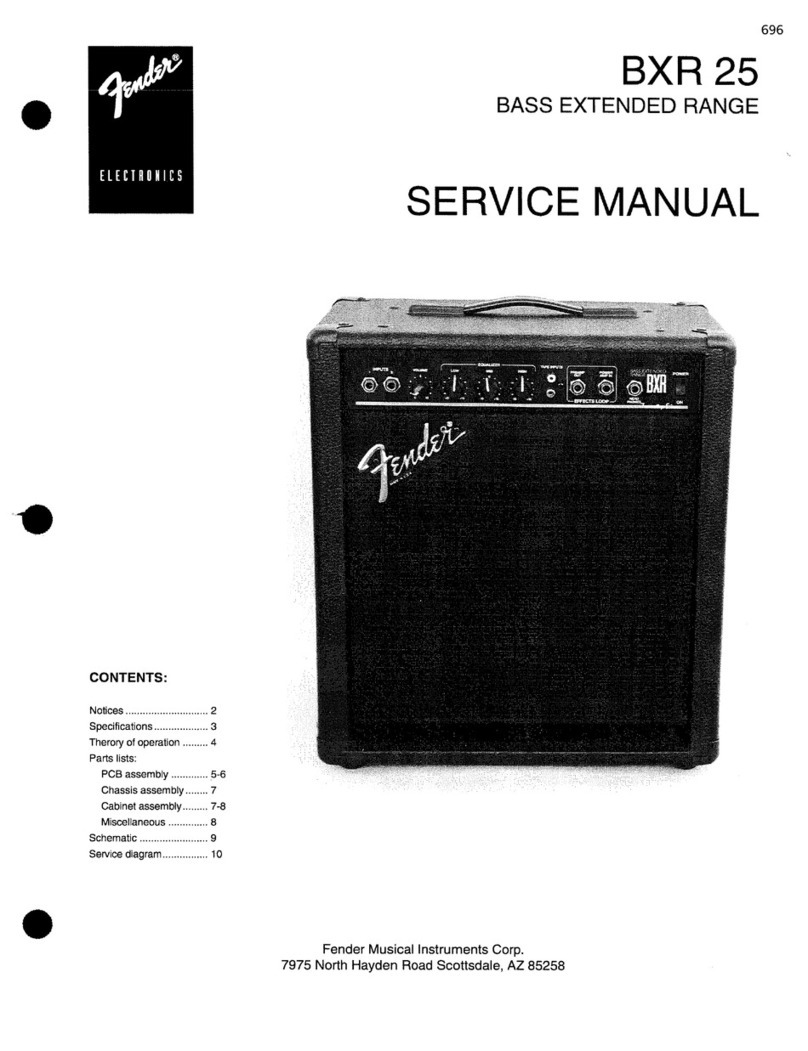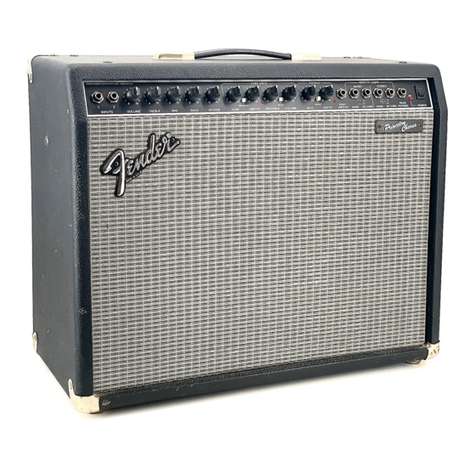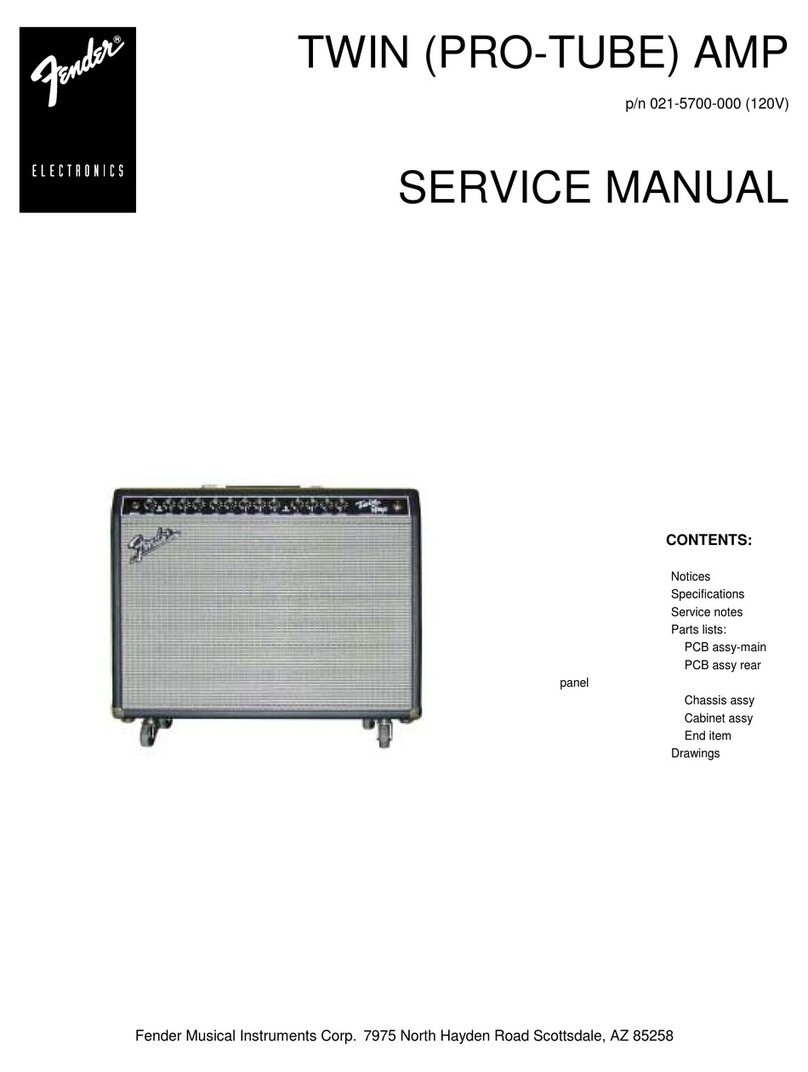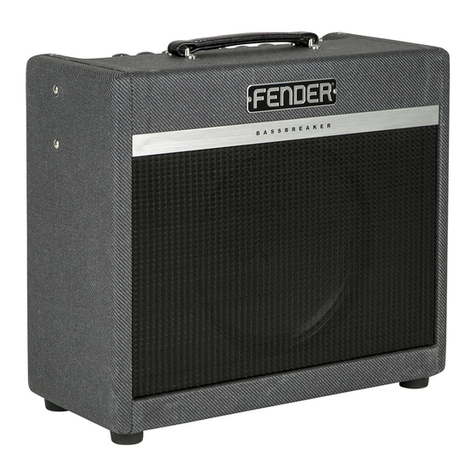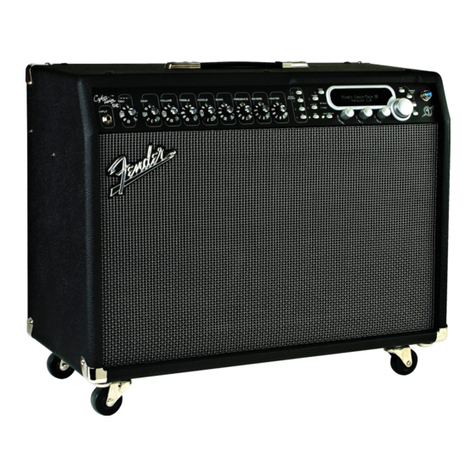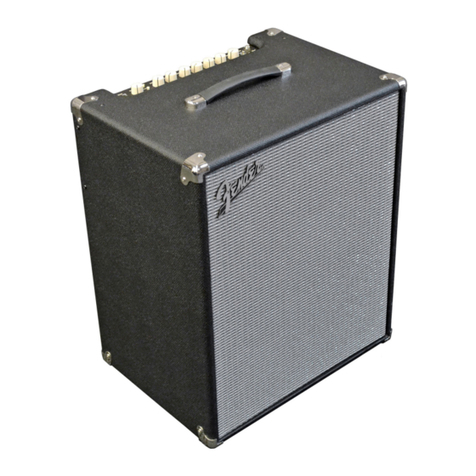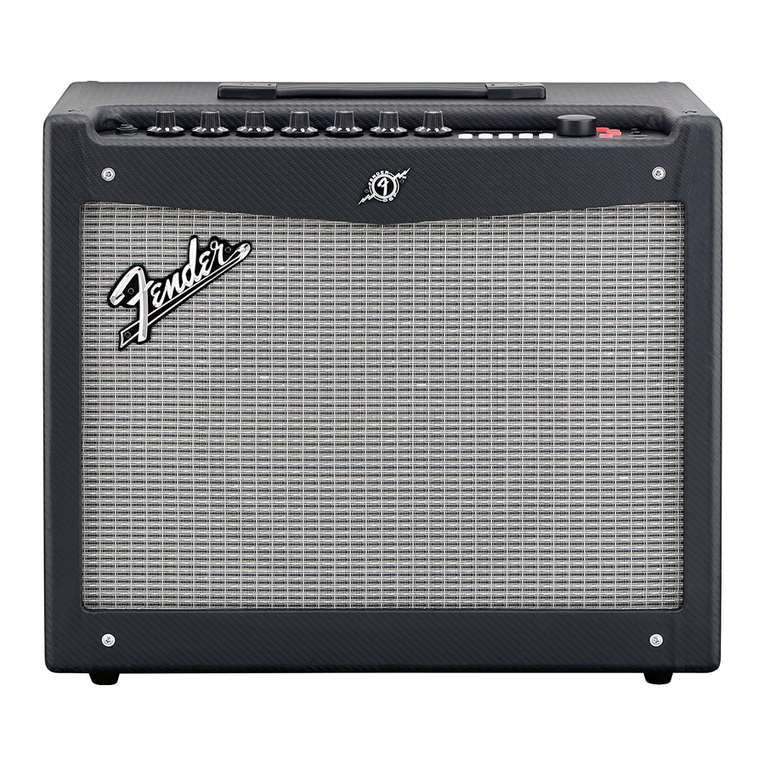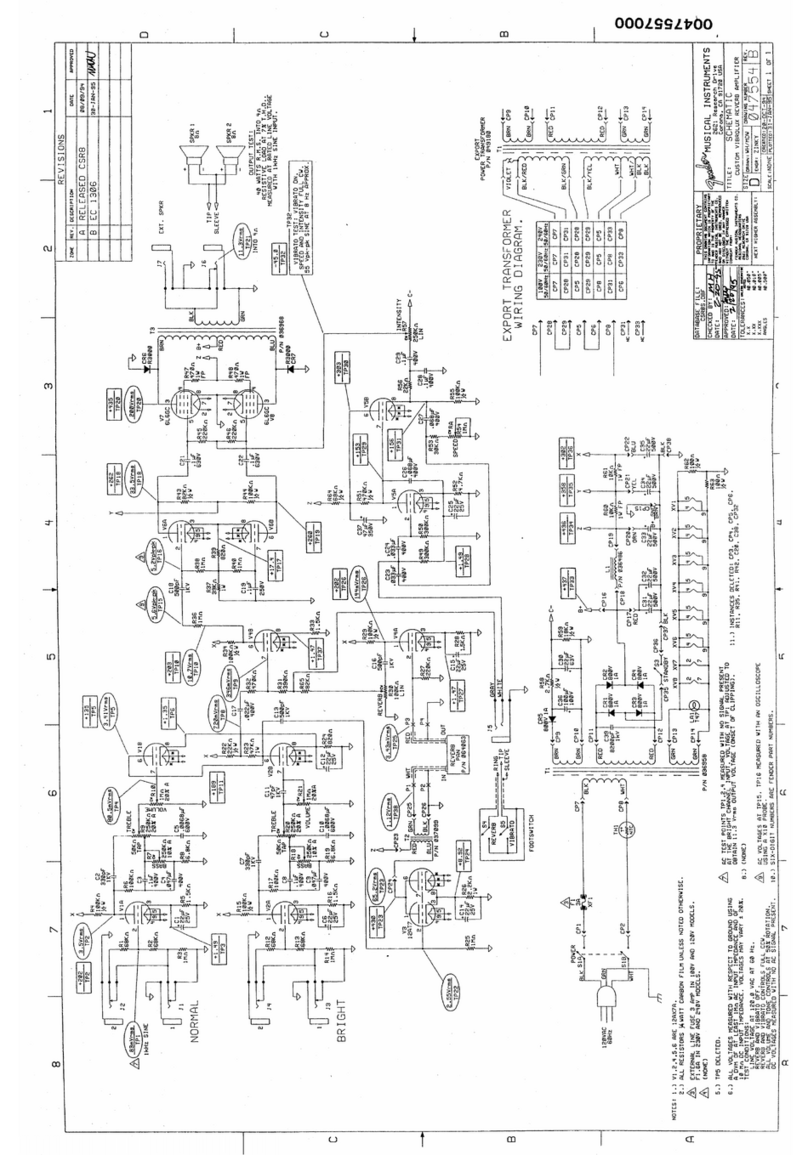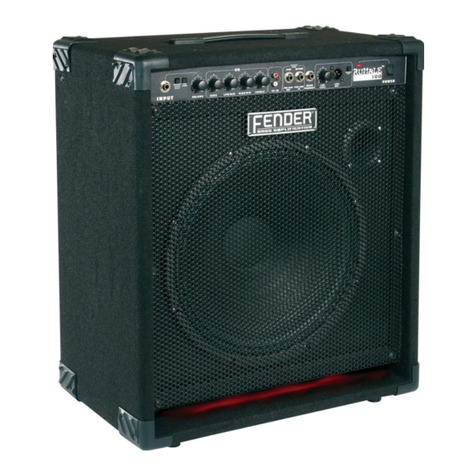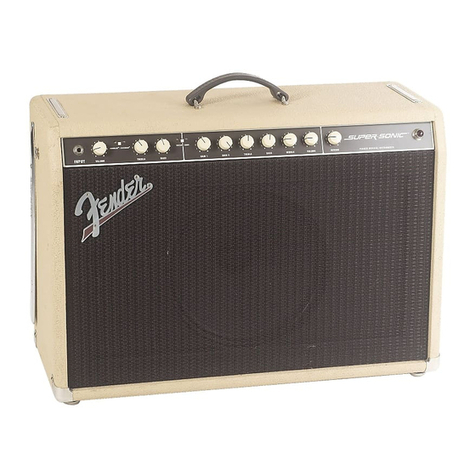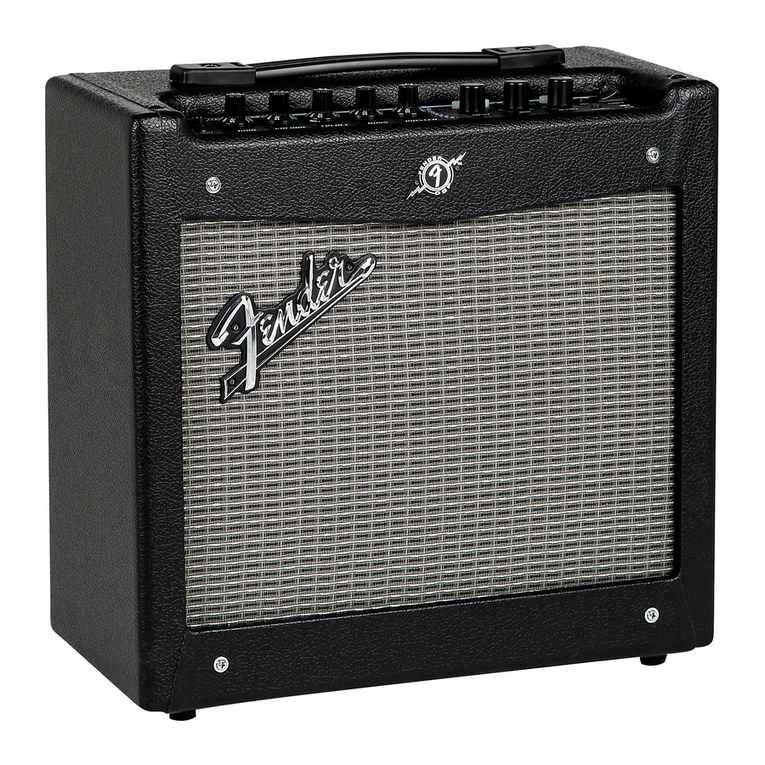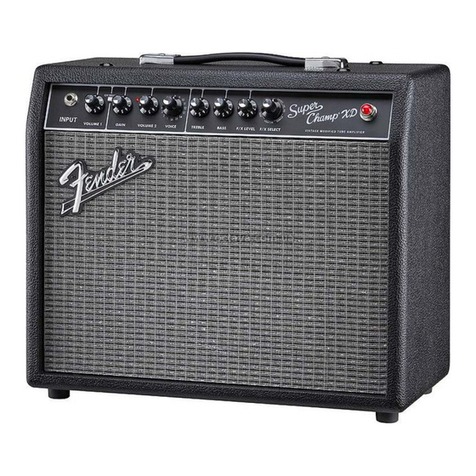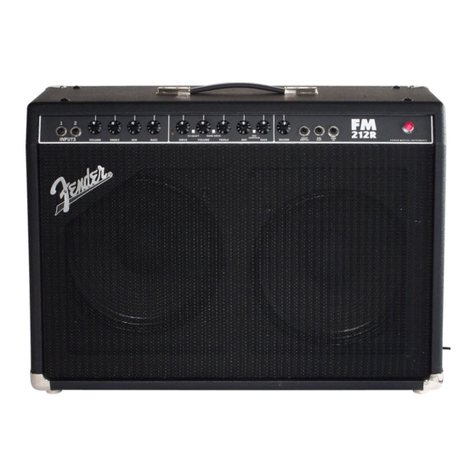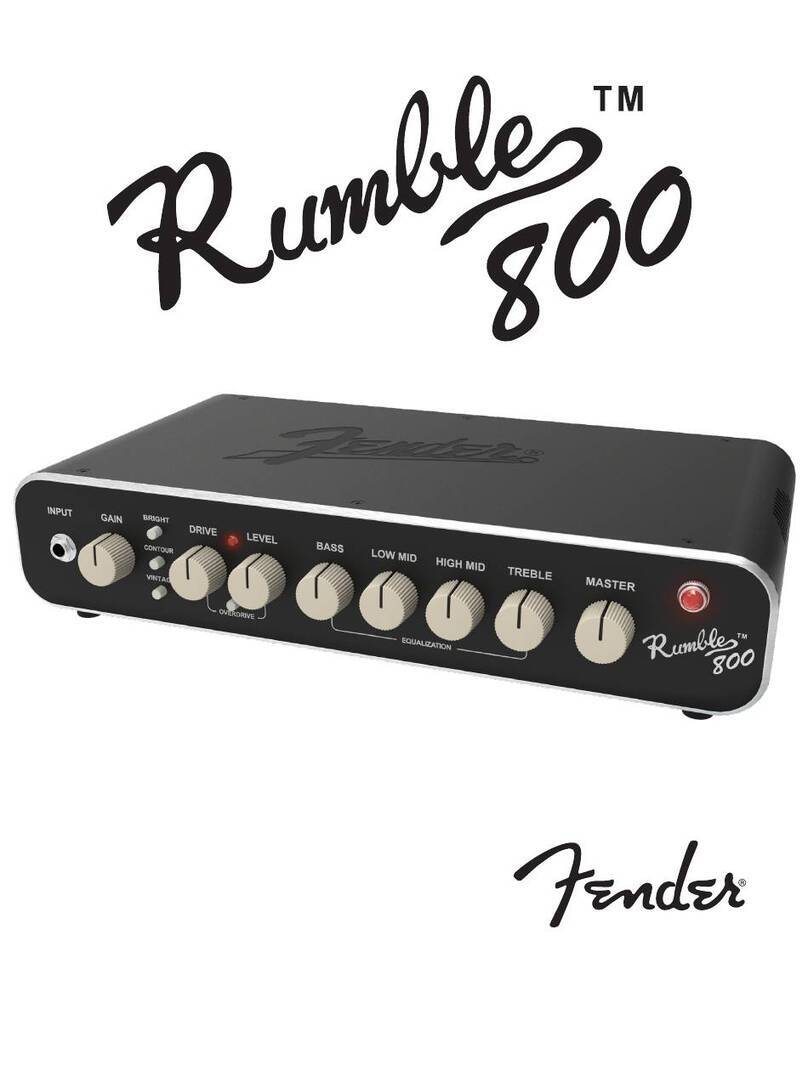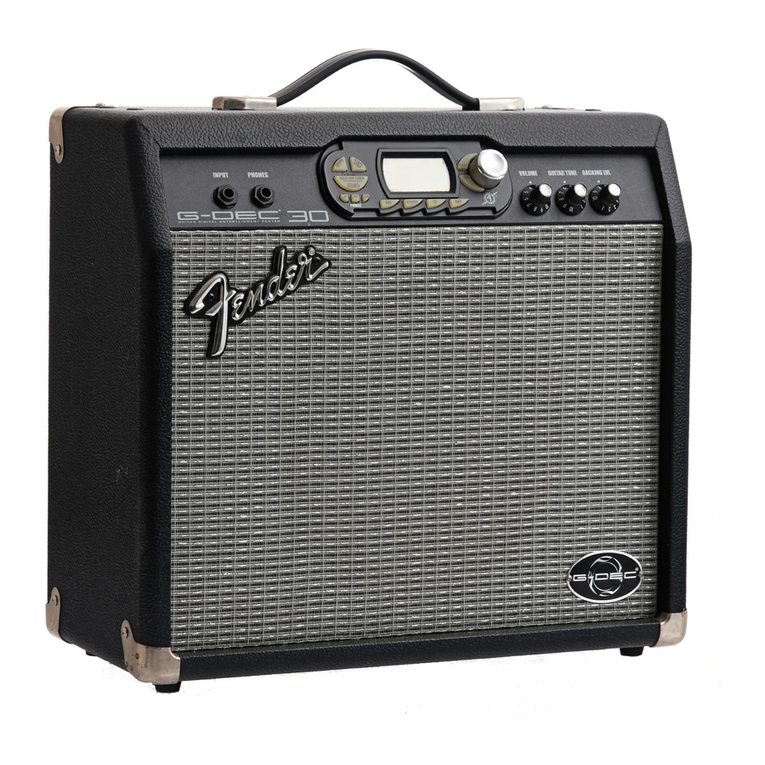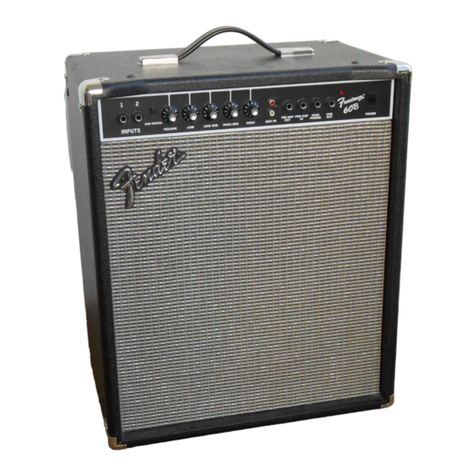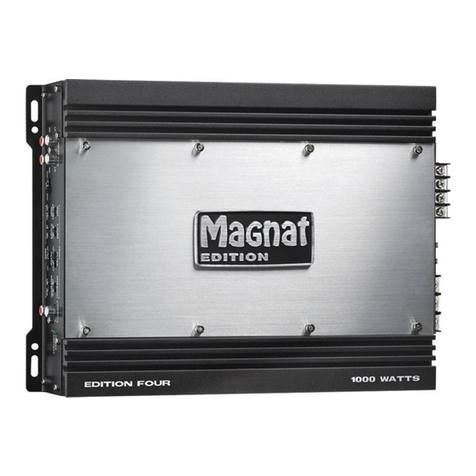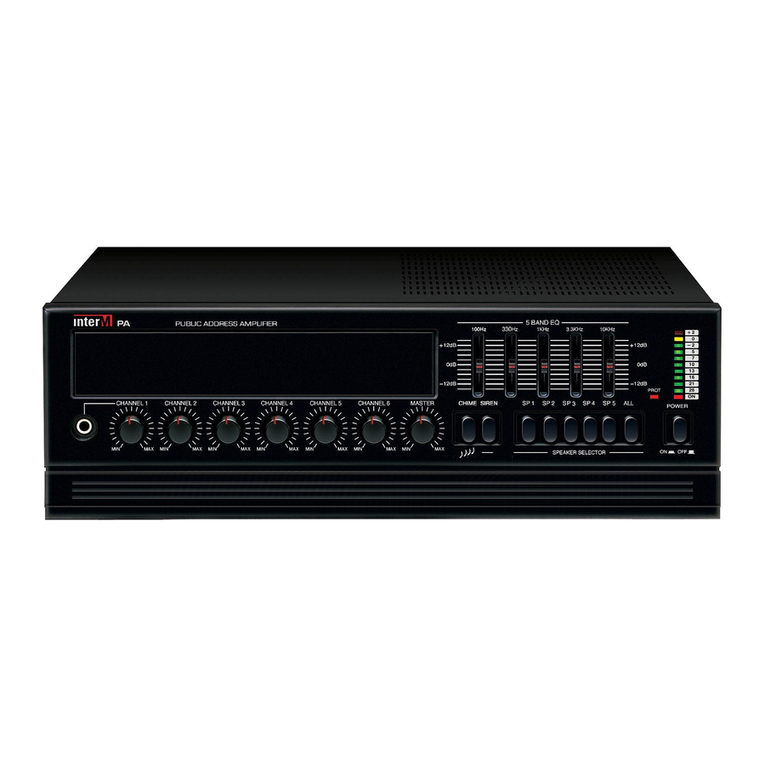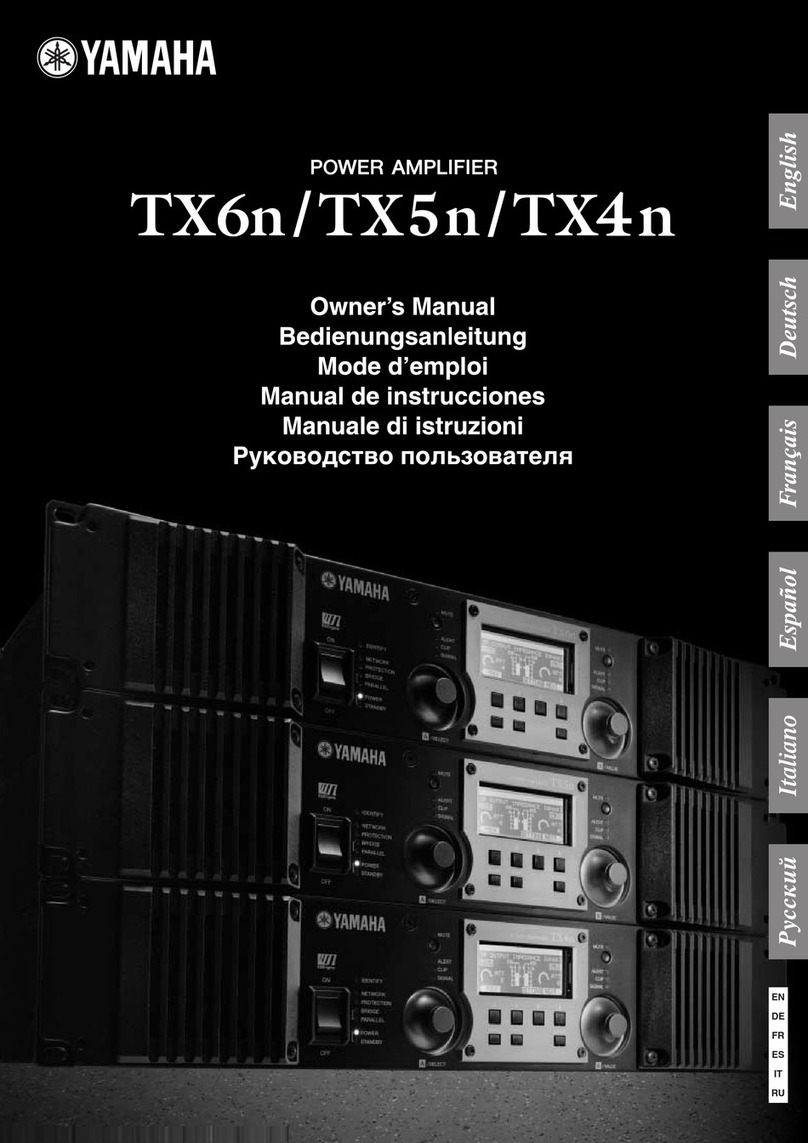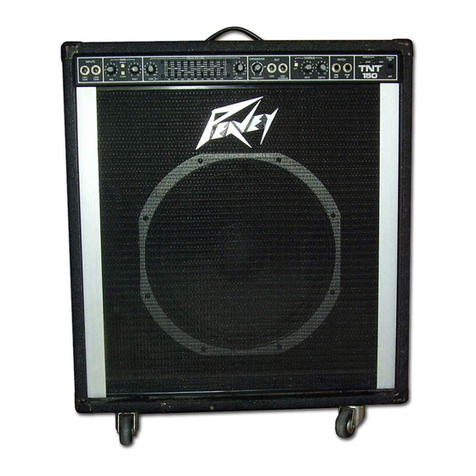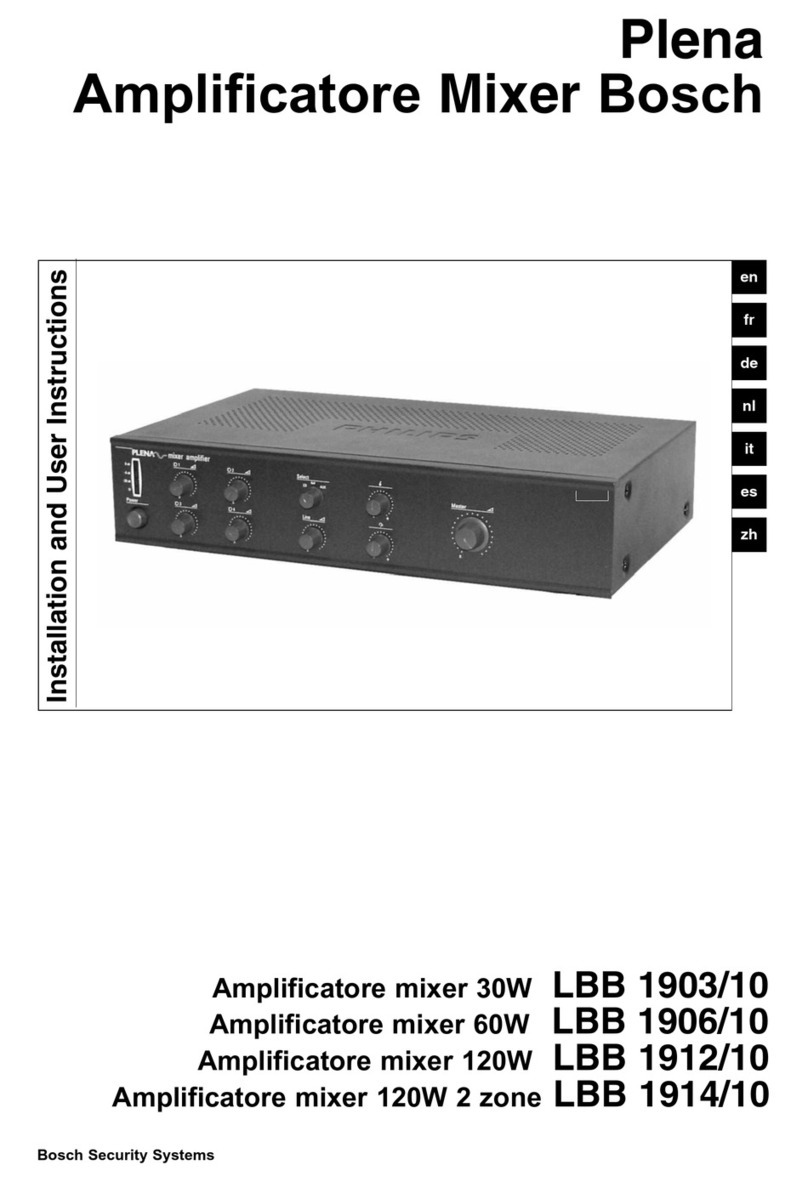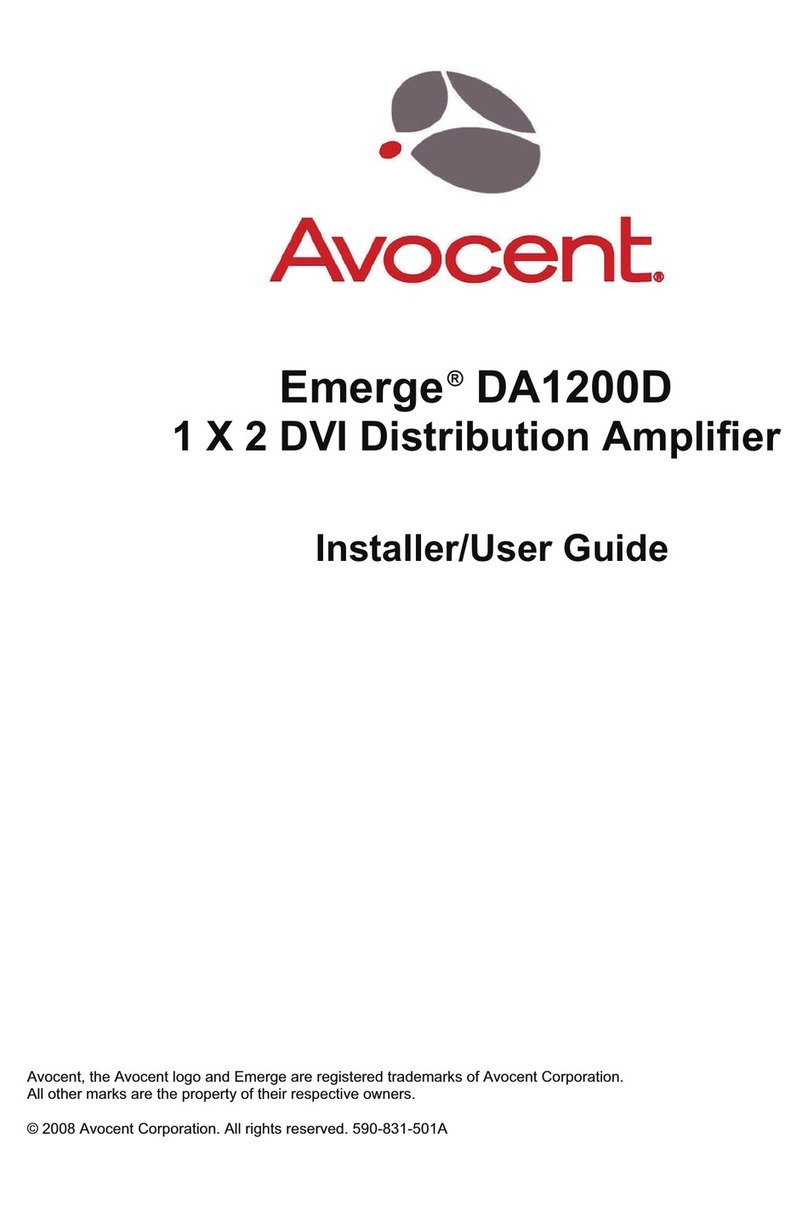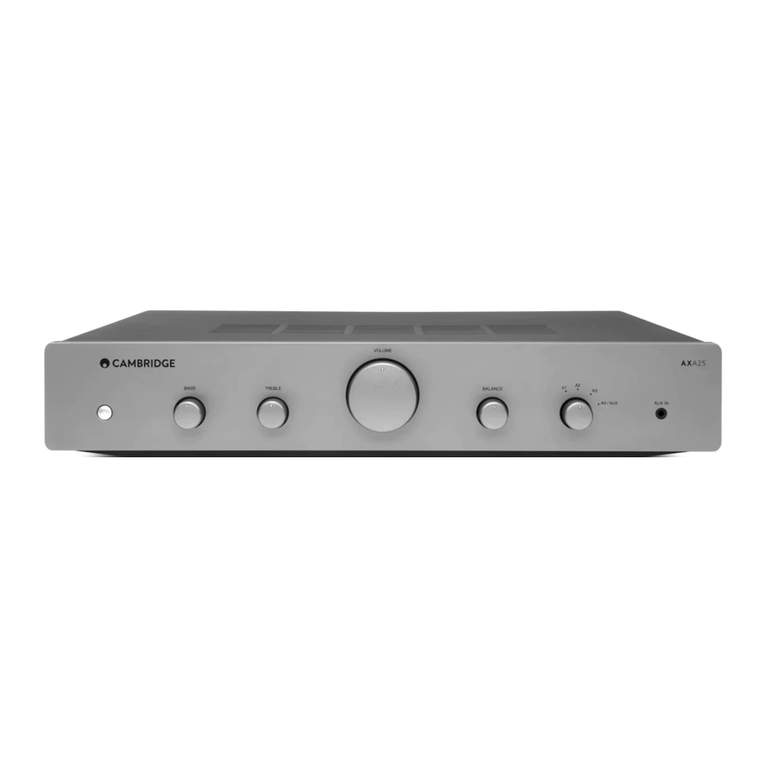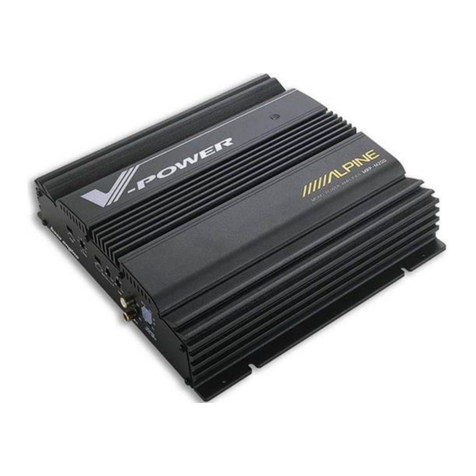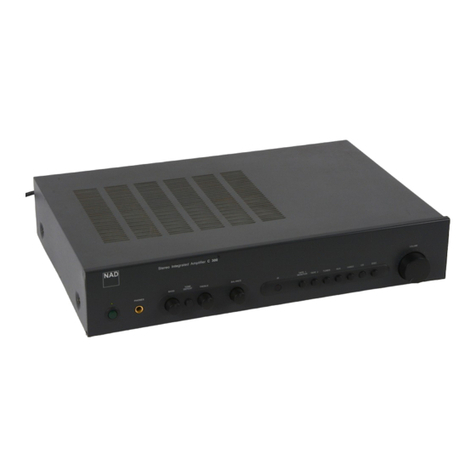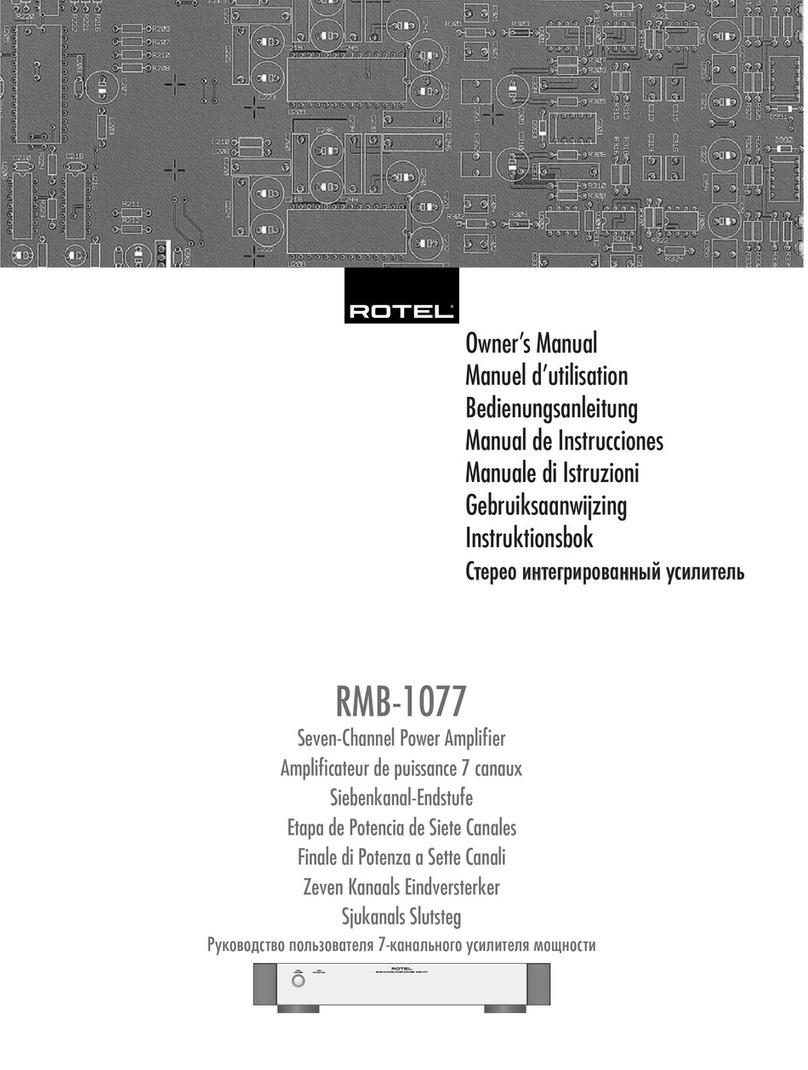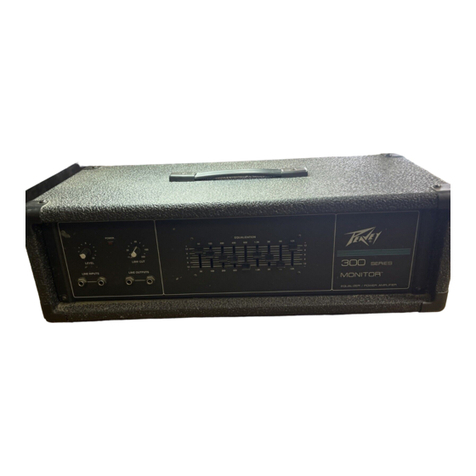
‘68 Custom Deluxe®Reverb
(This is the model name for warranty claims)
SERVICE NOTES
CHASSIS REMOVAL is accomplished by first re-
moving the four (4) screws from the rear upper
panel. Unplug the white and red plugs on the Re-
verb cable from the Reverb Input and Output
respectively and also the Internal Speaker Output
cable. Now remove the two screws (4 total) screws
on the left and right nickel plated chassis straps on
the cabinet top. Pull the screws completely out of
the cabinet. The chassis can now slide out to the
rear, giving access to the electronics.
PCB EXCHANGE POLICY
Parts marked with a single asterisk (*) in the Part
Lists are not field replaceable. If a failure due to
one of these components is detected, please con-
tact the FMIC Customer Service Department to or-
der the complete PCB Assembly.
CIRCUIT DESCRIPTION
This section provides concise information about new
or unusual circuitry designs incorporated into this
amplifier model. The purpose is to aid the service
technician by providing insight into the design areas
most likely to become obstacles in troubleshooting.
Information is focused for its effective use while
maintaining the security of Fender® proprietary in-
formation wherever possible.
PRE-AMPLIFIER/REVERB
The preamplifier is configured in two parallel sec-
tions –the Custom channel preamp & the Vintage
channel preamp.
For the Custom channel, the guitar signal is input to
J1 for high gain and J2 for lower gain. When both
inputs are used in a single channel, both signals re-
ceive low gain. V1-A provides a single gain stage
that drives the tone stack. The Vintage channel tone
stack is composed of R7 and R8 and associated
components provide treble and bass tone control
respectively. R10 provides volume control. V1-B
provides gain lost in the tone stack.
For the Vintage channel, the guitar signal is input to
J3 for high gain and J4 for lower gain. When both
inputs are used in a single channel, both signals re-
ceive low gain. V2-A provides a single gain stage
that drives the tone stack. The tone stack com-
posed of R19 and R20 and associated components
provide treble and bass tone control respectively.
R22 provides volume control. V2-B provides gain
lost in the tone stack.
The plates of V1-B and V2-B are tied in common.
This configuration allows both channels to utilize
the Reverb effect.
The output from V1-B & V2-B are fed via C12, cre-
ating a high pass response to the REVERB drive
amplifier V3. The REVERB pan is driven by imped-
ance matching transformer T1. The output of the
spring reverb signal is recovered and amplified by
V4-A. The V1-B & V2-B signal also couples to the
V4-B intermediate gain stage. This is the dry signal
which mixes with the wet Reverb signal at the grid
of V4-B.
TREMELO
V5-A is an R-C phase shift oscillator configured in a
classic vintage tube configuration. The oscillator
rate is controlled by SPEED control R42 in the first
leg of the phase shift network. The rate varies from
approximately 0.5 Hz to 5 Hz. V5-B amplifies the
oscillator output so that it drives either 1) the OP1
LDR opto-coupler assembly (for all non-European
models), or 2) the RoHS-approved LDR replace-
ment PCB Assy (for European models). This circuit
modulates the input impedance of the non-inverting
input of the tube power amp. The modulating level
is adjusted with the INTENSITY control R48. This

